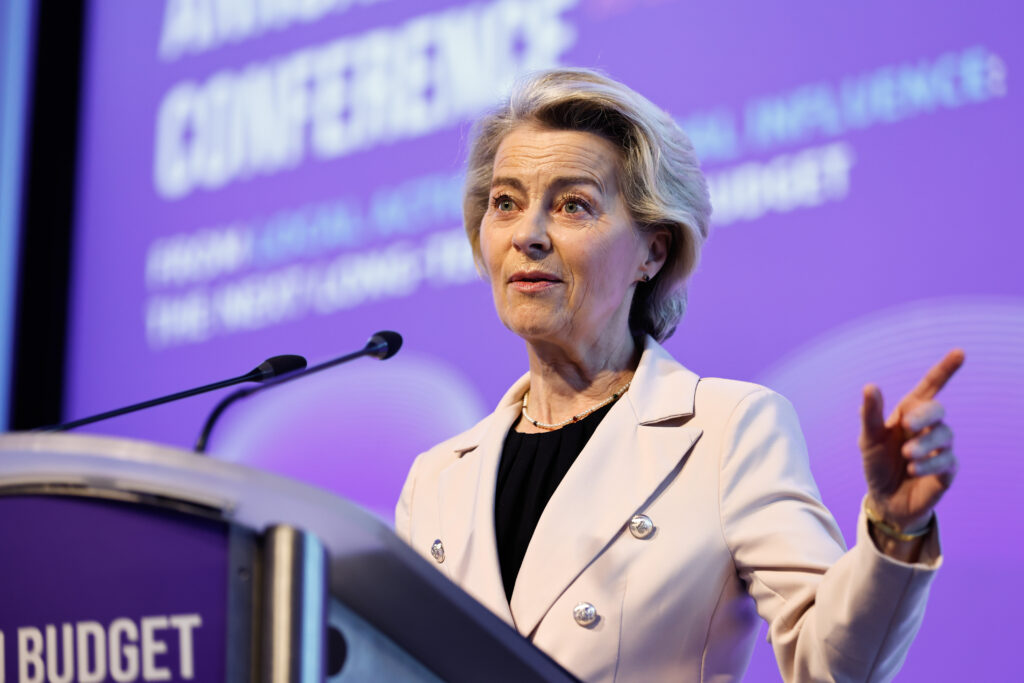Interviews / Energy and Raw Materials
17 July 2025
European Union: Future Budget Plan Sows Doubt and Reaps Farmers’ Anger

On Wednesday 16 July, the European Commission unveiled the main outlines of its multiannual financial framework, opening a phase of debate on the future of the Union. While the overall budget shows an ambitious increase, farmers are increasingly concerned about the proposal for a new architecture to finance Europe’s productive apparatus. In an already tense context, marked by the impact of the war in Ukraine on the grain market and growing anger among local authorities, the Common Agricultural Policy is undergoing a profound overhaul. Why have these proposals triggered such strong reactions from stakeholders in the sector? And what could be the consequences of such a shift in the EU’s economic policy? An analysis with Sébastien Abis, Associate Research Fellow at IRIS and Director of Club DEMETER.
On 16 July, the European Commission presented its proposed budget for the period 2028–2034. Why did it provoke such a reaction?
Re-elected as President of the Commission in summer 2024, Ursula von der Leyen had announced her intention to thoroughly revise the architecture of the EU budget, which is traditionally organised over a seven-year period, hence the term “multiannual financial framework” (MFF). In recent months, she has made progress in that direction, not without already causing a stir among MEPs and raising questions in Brussels, where many observers of EU affairs have noted a firmer and more dirigiste approach on the part of the German politician. Yesterday’s presentation, beyond certain logistical confusion that did nothing to help, therefore came as no surprise. Von der Leyen has for months made clear her intention to overhaul the MFF. Yet from a communication standpoint, while she claims this is the most ambitious budget in EU history, it turns out to be equally the most confusing and potentially the most controversial! Reactions are multiplying, and the 18 to 24 months ahead for negotiating it will undoubtedly be lively, bearing in mind that it must ultimately be adopted unanimously by the European Council, following approval by the European Parliament. A long process, launched yesterday with something of a cannon shot!
Why is that? What should we understand at this stage?
Nothing is definitive, and we should therefore be wary of drawing conclusions too quickly. Nevertheless, the proposed draft signals certain trends and foreshadows tough negotiations. At this stage, let us make three broad observations in order to map them out.
Firstly, the overall envelope. The President of the Commission has proposed an MFF of almost €2,000 billion for 2028–2034, compared with €1,210 billion in current prices for the 2021–2027 period. A significant increase, then, but one that comes with an important caveat. The current MFF was supplemented, due to the COVID-19 pandemic, by a financial instrument known as NextGenerationEU, worth €750 billion—bringing the total to over €2,000 billion on paper. It must be recalled, however, that this instrument constitutes debt. The project presented by Ursula von der Leyen indicates that €168 billion will need to be mobilised between 2028 and 2034 as a first tranche of repayment—i.e. €24 billion per year. In other words, the Commission is announcing an increase in the future MFF, which would account for 1.26% of the European Union’s gross national income (GNI), compared to 1.13% currently. But once the post-COVID recovery repayments are deducted, the effective rate drops back to 1.15%. Now, two things must be considered: on one hand, the EU faces growing needs in light of contemporary challenges and a need to regain competitiveness, as advocated by the Draghi Report; on the other, some Member States (Germany, the Netherlands, Sweden, Denmark) oppose such budget increases to the MFF, deeming them unrealistic and fearing further debt, whereas Spain is currently calling for the MFF to rise to 2% of European GDP and for the creation of a permanent joint debt mechanism…
Secondly, the major difference lies in the structure, political priorities, and budget management procedures, with notable breaks from the 2021–2027 MFF, in the name of greater flexibility and adaptation to new challenges, according to Ursula von der Leyen. The Commission proposes to group several EU policies (notably CAP, regional/social cohesion, fisheries) into a National and Regional Partnership Fund (NRP) of €865 billion, breaking with the logic of separate envelopes. This reduces the institutional autonomy of the Common Agricultural Policy (CAP), merging it into a multi-fund logic managed more directly by the 27 Member States and thus reducing the common dimension of this historic EU policy. Moreover, CAP funding would fall to €294 billion, a reduction of around 20% compared to the current amount. The CAP, long dominant in EU fund allocation—accounting for a third of the 2021–2027 MFF—would see a continued decline in its budget share, as in previous cycles. It accounted for two-thirds of the EU budget until the 1980s and still half in the 1990s and 2000s. In the proposed MFF, the CAP would represent just 15%. To provide some nuance, it is worth noting that the CAP budget has increased fivefold since the early 1980s, due to inflation, EU enlargement (and thus new Member States’ contributions), and the evolving priorities of agricultural and rural policies.
Lastly, another key observation at this stage is the decision to significantly increase funds for technology and digital development, security and defence policies, and migration issues. Despite the highly ambiguous narrative surrounding the Green Deal—the strategic heart of the previous Commission (2019–2024), which made it its flagship for EU carbon neutrality by 2050—environment and ecology remain priorities in the upcoming MFF’s proposed directions. By aggregating the figures, roughly a third of this €2,000 billion would be earmarked for climate financing—more than in the current budget. So there are, in principle, no brakes on greening, decarbonisation, and biodiversity protection. This does not mean the negotiations in the coming months will be smooth on this front, as some will demand a balance with social and economic dimensions. Indeed, it is worth noting that the current Commission’s keyword is “sustainable competitiveness”—a smart formula as it combines development and transition challenges without underestimating the resources needed to tackle them. Put simply, the EU, Member States, and all stakeholders cannot sustainably (or substantially) invest in green policies if they are in the economic red or under geopolitical strain. And unfortunately, that is roughly the current state of play.
What should we anticipate from the agricultural sector if these orientations are confirmed?
Many European farmers were demonstrating in Brussels yesterday as the 2028–2034 MFF project was unveiled. Many reactions have followed, in France but also in other Member States, regarding the agricultural elements of the Commission’s proposal. Many had feared such developments in von der Leyen’s project, while also expressing surprise, given that she had initiated a strategic dialogue on agriculture in the first half of 2024, in response to the large waves of agricultural protests in January/February of that year, just before the European elections and her reappointment as Commission President. These protests, in almost every Member State, converged around demands for greater coherence between agricultural, environmental and economic policies, regulatory simplification, and strategic predictability—both financially and in terms of medium-to-long-term direction. Agriculture is an activity that cannot escape the long term, that becomes more complex when inconsistencies multiply, that cannot survive if producers’ incomes collapse, and that cannot adapt to climate change if innovation and research stall. Here, with the Commission’s announcements, we are heading straight for a weakened CAP in budgetary terms, fragmented through policy mergers, and renationalised according to the preferences of Member States. In short, an agricultural policy that is ever less common and ever more competitive.
It would therefore be unsurprising to see new farmer protests emerge in the EU over the coming months, as the core issues remain unresolved and this first draft of the post-2027 MFF throws fuel on a fire that is far from extinguished. That fire is even more flammable when we add three international factors: US tariffs that could severely affect European agricultural production and agri-food businesses; the EU-Mercosur free trade agreement, which is neither signed nor abandoned—yet Ursula and Lula are committed to moving forward in the coming weeks; and finally, Ukraine.
Why is Ukraine a sensitive issue for the EU and the Common Agricultural Policy?
The Commission proposes to allocate €100 billion to Ukraine in the next MFF—€40 million per day and a third of what would be allocated to the CAP. Already, the EU and Member States have devoted around €160 billion in military, budgetary and humanitarian aid to Ukraine between March 2022 and May 2025—equivalent to €140 million per day. And Ukraine had, for several months, free access to the European market for its agricultural products—a scheme that was adjusted from summer 2023 to contain the massive influx into Member States, as this caused major competitive distortions for European farmers, particularly in the eastern EU. Of course, Ukraine must be supported, as it is suffering and fighting to resist the Russian invasion. And of course, it must be acknowledged that the country is now officially in the process of EU accession. But these amounts are not insignificant, considering the state of EU finances.
Moreover, it must never be forgotten that Ukraine is a major agricultural power and that this sector will weigh heavily in future EU–Ukraine relations, whatever the outcome. If Ukraine joins, the internal balance within the EU—and especially in relation to the CAP—will be significantly affected. If it does not, the EU will have a major competitor on its doorstep. Hence a question: is the Kremlin pushing the EU into an arms race it cannot afford and into growing agricultural divisions that serve its own interests, given Russia’s ambitions in this field? Putin has always said he would not accept Ukraine joining the North Atlantic Treaty Organisation (NATO)—not the EU. Incidentally, that is also the position of the United States.

